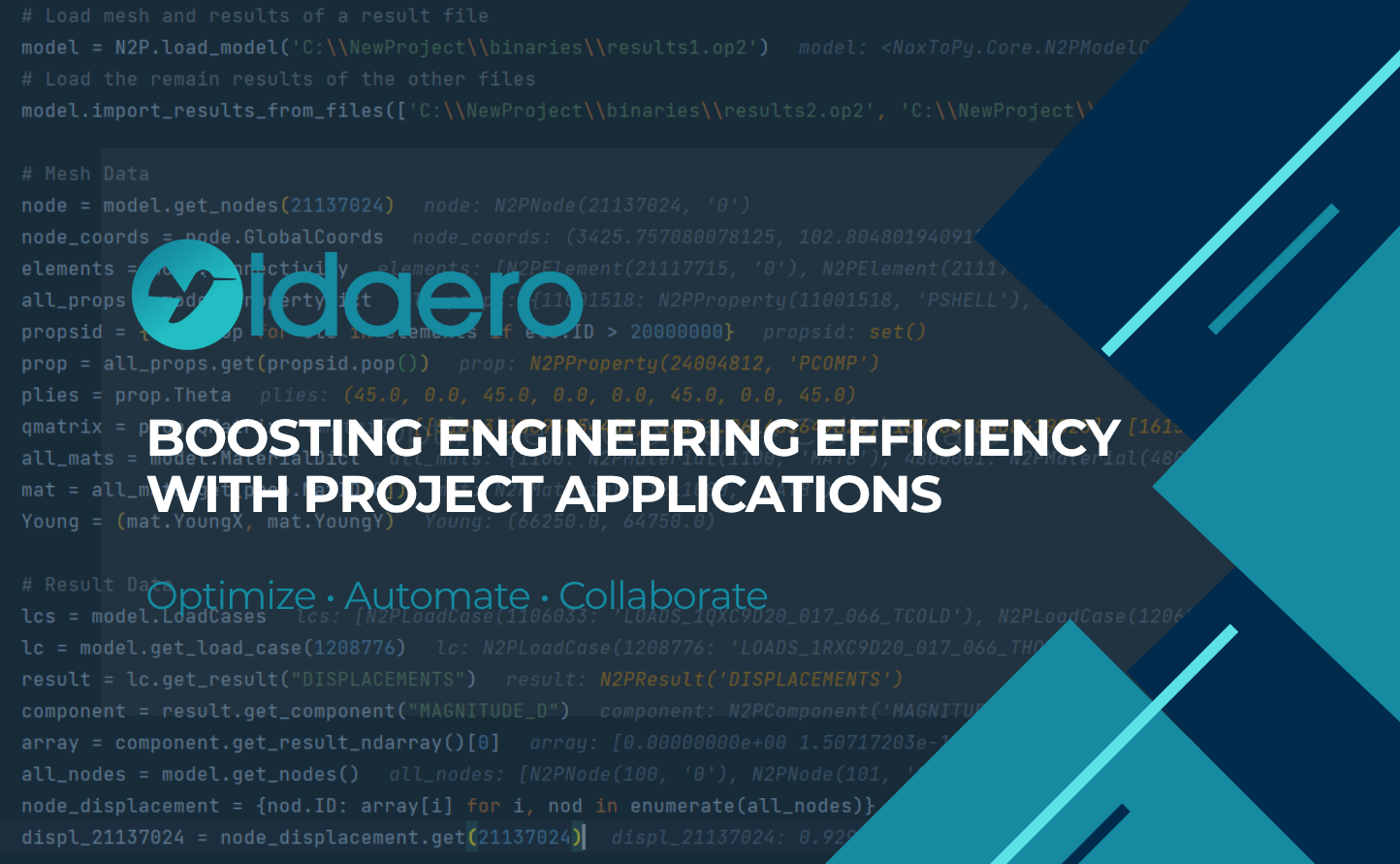
01/10/2025
Project Applications: A Key to Efficiency in Engineering Projects
In complex engineering projects, workflow gaps often arise and are typically addressed through manual operations or data transformations between different platforms. Developing project applications helps optimize processes, reduce errors, and adapt tools to each team’s real needs, improving both efficiency and collaboration.
Identifying the Problem: Workflow Gaps and Lack of Time
Engineering projects are becoming increasingly demanding: tighter deadlines, more complex analyses, and multidisciplinary teams working across multiple platforms.
In this environment, standard commercial tools rarely cover all workflow steps. Gaps appear, and engineers often bridge them manually, by exporting and transforming data between formats, repeating manual operations, or writing temporary scripts to move the process forward.
Although these improvised solutions work in the short term, they consume valuable time, introduce errors, and make it difficult to scale or parallelize work. As a result, teams lose efficiency and divert resources away from high-value engineering tasks.
The Internal Challenge: Limited Development Resources
Engineering teams usually know their workflows and pain points better than anyone. However, they face a common challenge: a lack of time and development resources.
While they have the technical knowledge to define useful tools, tight schedules and heavy workloads often push these initiatives to the background. When developed in-house, these solutions are often partial or lack the robustness required for sustained use.
The Opportunity: Developing Project Applications
Project applications, tools designed specifically for a project’s workflow, allow teams to directly address these gaps. By tailoring functionality to the unique characteristics of each project, teams can:
- Automate repetitive tasks, reducing the risk of human error.
- Speed up data processing and analysis, even for multiphysics simulations or large datasets.
- Facilitate parallelization, making better use of computational resources.
- Integrate advanced technologies such as machine learning models or generative AI to support decision-making.
- Improve traceability and collaboration, ensuring consistent information flow across departments and platforms.
The result is a significant increase in productivity and reliability throughout the engineering process.
The Solution: Collaborating with a Specialized Team
Outsourcing the development of project applications to a team that combines software engineering expertise with a deep understanding of engineering processes can turn these challenges into opportunities.
A specialized partner like Idaero brings:
- A precise understanding of real user needs and workflows.
- The ability to design robust, scalable solutions aligned with industry standards.
- Experience integrating advanced technologies such as Python tools, multiphysics solvers, machine learning, generative AI, and digital twins.
- Smooth integration between multiple platforms and formats.
This combination ensures that the developed applications are not only technically sound but also genuinely useful and adapted to the specific context of each project.
Tangible Benefits
The impact of well-designed project applications is both immediate and measurable:
- Significant time savings.
- Fewer manual tasks and lower error rates.
- Improved collaboration across teams and disciplines.
- Greater traceability and control over project data.
- Better use of computational and human resources through optimized workflows and parallelization.
Our Approach at Idaero
At Idaero, we develop project applications tailored to each client’s specific challenges.
Our key differentiator lies in a multidisciplinary team: experienced software engineers working closely with our engineering experts. This ongoing collaboration allows us to fully understand workflow gaps and deliver solutions that integrate seamlessly into real processes.
Over the years, we have developed project applications for a wide variety of use cases. Below are just a few examples:
- Distributed systems for high-performance simulation and visualization, enabling intensive computations and complex analyses across parallel architectures and distributed resources.
- Tools for structural results extraction and post-processing, which automate the handling of large volumes of data (e.g., thousands of load cases) and efficiently generate critical reports.
- Applications for automated welded joint calculations, integrating geometric and load data to evaluate reserve factors according to reference standards.
Whether tackling complex multiphysics analyses, data transformation pipelines, or AI integration, our goal is to create applications that accelerate processes, ensure reliability, and adapt to each client’s evolving needs.
Conclusion
In today’s engineering landscape, developing project applications is no longer a luxury but a necessity to remain competitive.
Partnering with a team that combines software development expertise and deep knowledge of engineering workflows ensures efficient, robust solutions that truly meet each project’s needs.
Contact us to discover how Idaero can help you close workflow gaps and achieve your project goals more efficiently: contact@idaerosolutions.com